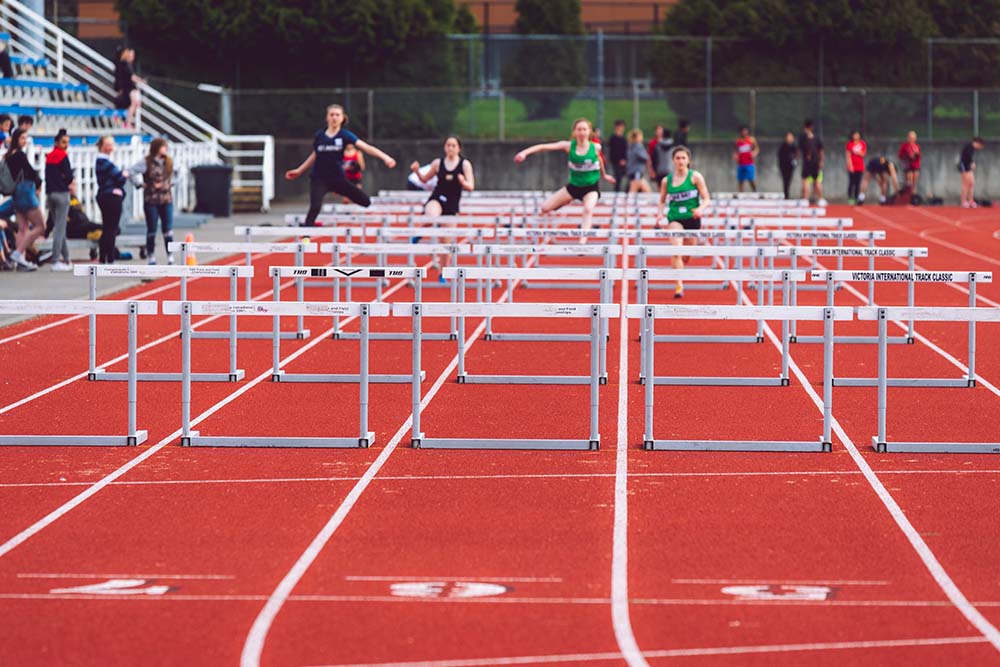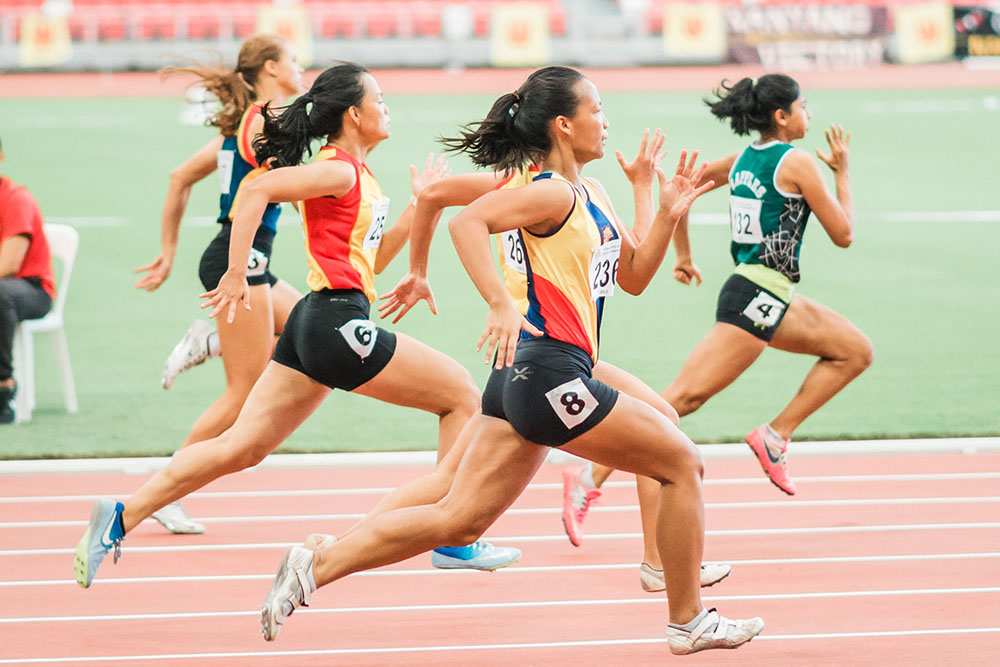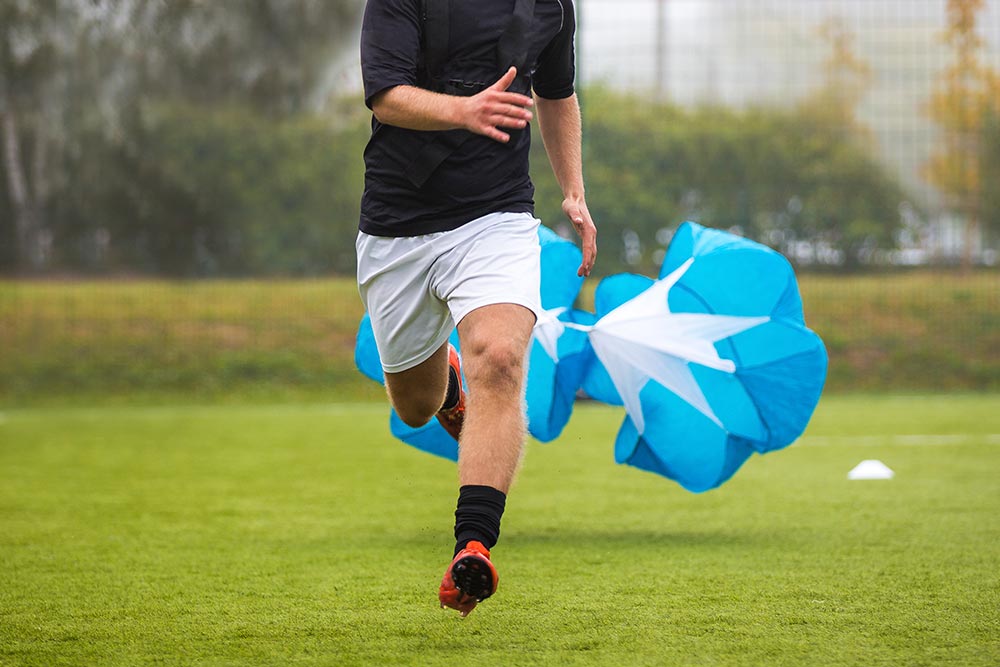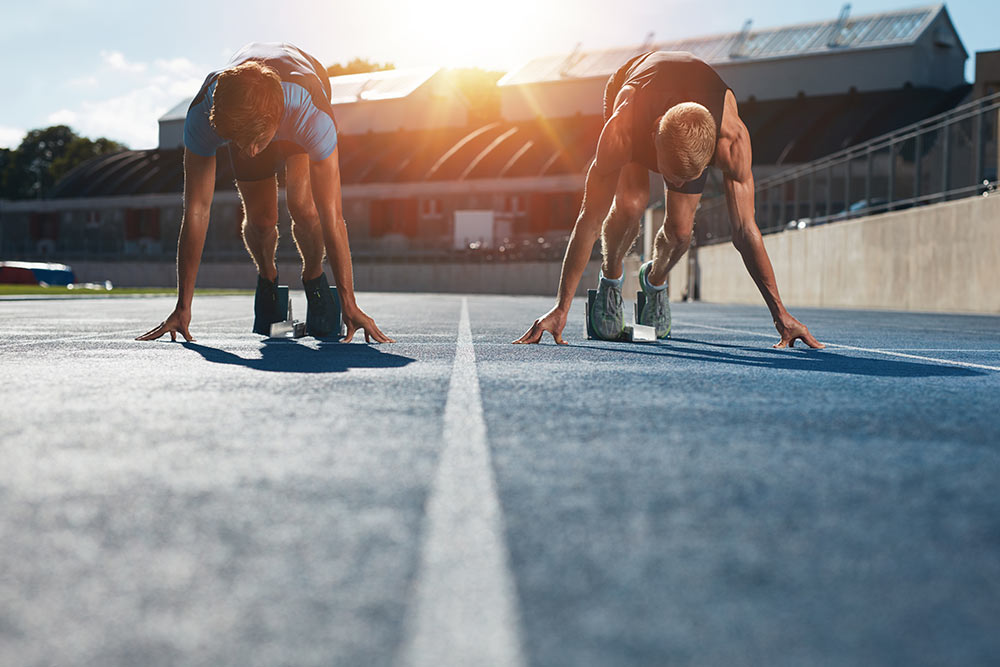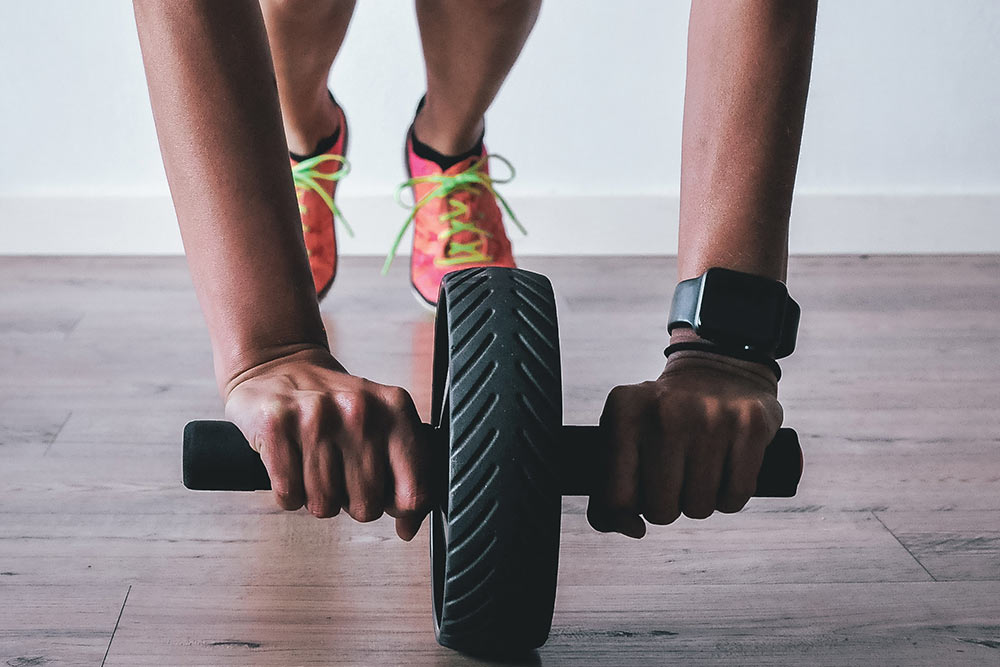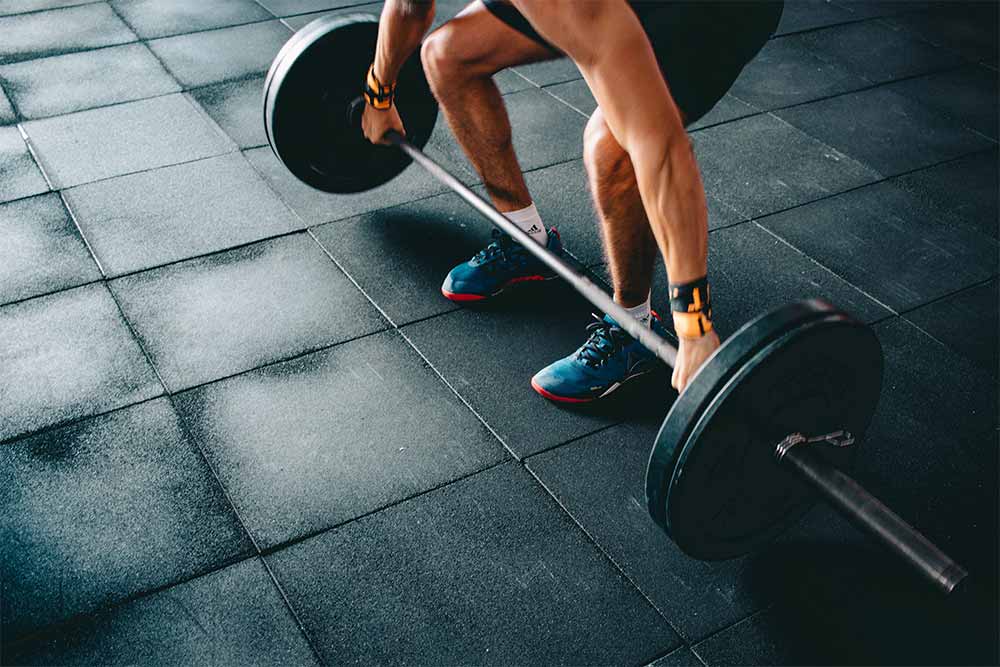How to Achieve a Near Perfect Sprinting Technique
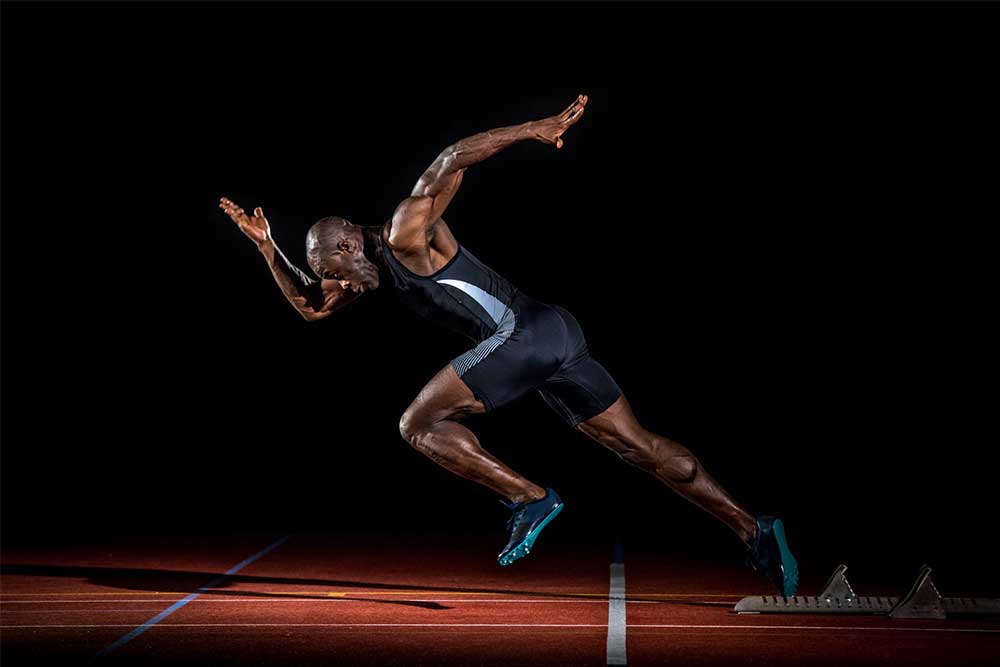
Alyssa Bialowas
The proper sprinting technique requires the combination of understanding the biomechanical variables of sprinting as well as external factors such as your running equipment (proper footwear, adequate running stopwatch for training), and environmental factors such as the temperature, air resistance, and the conditions of the ground you’re running on. With so many different factors influencing our speed and performance, we’ve put together some key techniques for you to use that are completely within your power to change that will bring you closer to your peak sprinting speed.
High speed sprinting relies on your sprint running biomechanics and your control in the following areas of your body listed below. Positive adaptations to your sprinting form enhance your maximal running speed. Monte et al (2017) observed maximal running speed is optimized when sprinters of both genders self-select their step/stride frequency. If
Related Article: Push or Pull? Sprinting Mechanics and You
How to achieve a near perfect sprinting technique:
Head Position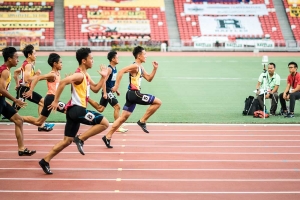
Should always be upright, in line with the rest of your body. Your head should be relaxed instead of stressed and tense, and your eyes should be focused straight ahead of you in the direction you’re going. Making sure your head is in the correct position and facing forward elongates the spine and helps to prevent injuries that could occur as a result of one side of your body taking on more stress than the other. With your head forward it will also increase concentration and speed!
Shoulder Position
Should always be straight, facing the direction that you are going. Shave off speed in your sprint by eradicating lateral movement of the torso and pump your arm. Your body will end up doing more work and deplete your energy faster if it is working to correct shoulder in poor form. Posture is an important part of health and longevity in general. Habits you form off the track affect your performance when you’re running. Your shoulders should always remain steady and close to your body.
Hip Position
Should be in line with your head and shoulders, facing forward. To achieve proper hip height, your head and your shoulders must stay upright. If you have too much rotation in your shoulders, you are again faced with your body’s momentum being placed in more directions than forward. The focus of your hip position is the intention to relieve joint stress and put all of your body’s momentum in forward motion. At maximum speed, the trunk of your body should almost be erect, at approximately 50 degrees.
Knee Position
To generate power, push your knees forward and bring them up high as you sprint, also encouraging a longer stride. When you take shorter steps during sprinting, you are not optimizing the full length of your stride. A high knee allows your leg height to strike out greater distances. Think of how a cheetah runs. At a full sprint, their body flattens as with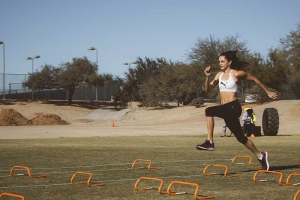 their stride. We are not necessarily looking for our bodies to flatten, but the reach they have with both sets of legs is powerful and exactly what we’re looking for in follow through with knee placement. We are using a high knee position to gather our body for maximal, explosive force with our foot placement.
their stride. We are not necessarily looking for our bodies to flatten, but the reach they have with both sets of legs is powerful and exactly what we’re looking for in follow through with knee placement. We are using a high knee position to gather our body for maximal, explosive force with our foot placement.
Feet Position
A high force output that creates significant flight time and lower contact time with the ground will assist in achieving maximum speed in sprinting (Monte et al. 2017).
With each stride, land on the middle of your foot. As your knee pulls your foot upwards during your stride and comes back down towards the ground, lift your toes up towards your shin so you land on the ball and middle of your foot, not the heel. Your foot should also be directly under and in line with your body, rather than ahead of it. Your heel should come off the floor and travel in a swooping arc to your bum, without touching it.
Arm Position
In the start phase, your arms should swing opposite to your legs, flex your elbows at approximately 90 degrees, and your fists swing towards your forehead. As your arms swing back forward, your hands should pump through to your shoulder level, when they’re on their way down they should go past your hips. As with placement of our moving body above, proper arm motion is important for driving all momentum and power forward.
Related Article: Boost Your Metabolism with Sprint Intervals
Preventing Injury Through Better Sprinting Form
The effects of bad sprinting form slow you down now and have potential negative effects on your physical health longterm. If one of these positions is off and you are an avid sprinter, you could be impacting the other joints without realizing. A consistent turn of the head or shoulders could impact the range of motion in your hips, which in time could cause avoidable pain. Focusing on these techniques will provide relief and harmony to your body’s forward motion. If you find any of these techniques causing you pain or otherwise unusual difficulty to achieve, please consult a physical therapist or doctor about your condition.
Take Away
Sprinting technique is all about forward momentum. Focusing on adjustments in sprinting form in your shoulder, hips, knees, feet, and arms can prevent costly displacements of energy, momentum, and power. As an added bonus, improving sprinting form is valuable for preventing injuries resulting in an uneven use of both sides of your body. By implementing this handful of key techniques, you will see(and probably feel!) immediate improvements in your sprinting performance. Maybe we won’t all win our next race, but we’ll certainly feel better and improve. In addition to these immediate improvements to your form, you can make further steps longterm through unilateral training. Unilateral training can help to correct any uneven use in your body that may be causing imperfections in your form. With a combination of focus on technique and cross-training, you can become an unstoppable force on the track.
You Might Like:
The Biomechanics of Breathing During Sprinting
Sprinting is one of the most physically demanding tasks that the human body can perform. It requires an incredible amount of explosive power, tissue resilience, and motor coordination, in conjunction with a vast body of...The Biomechanics of the Sprint Start
A perfect sprint performance is dictated by several factors, including muscle strength, explosive muscle power, a high degree of neural coordination, and most importantly – optimal sprinting technique. However, while most sprinters tend to take...How Do Sports Injury Rates Change As You Age?
As you get older, exercise becomes the most beneficial thing you can do for your body. It staves off disease and illness, all whilst helping you maintain (and often improve) joint, bone, and muscle health....Does Sprint Performance Decline With Age?
Exercising regularly across your lifespan is the perfect way to maintain health and function well into your golden years – and one of the best modes of exercise on the planet is unquestionably sprinting. Sprinting...Resisted Sprinting For Speed & Acceleration Development
Hunter Bennett Over the last decade, we have seen the world of athlete development come along in leaps and bounds (both literally and figuratively). We have seen the widespread uptake of strength training, plyometrics, and...Start Positions for Sprinters
Hunter Bennett Sprinting is one of the most incredible acts of human performance on the planet. While at first glance it may seem like quite a simple task (just run as fast as you can,...Monte, A., Muollo, V., Nardello, F., & Zamparo, P. (2017). “Sprint running: how
changes in step frequency affect running mechanics and leg spring behavior
at maximal speed.” Journal of Sports Sciences, 35, 4, 339-345.

